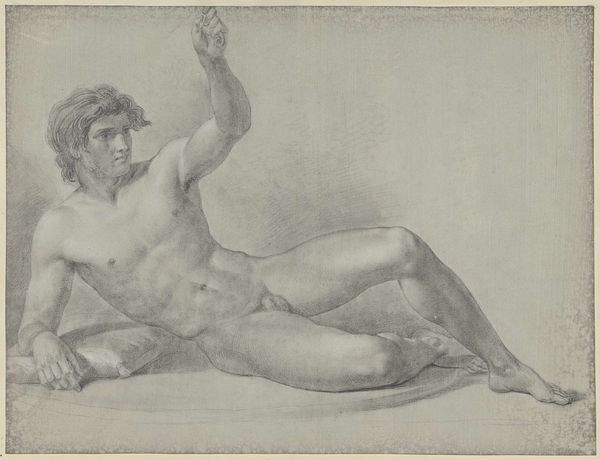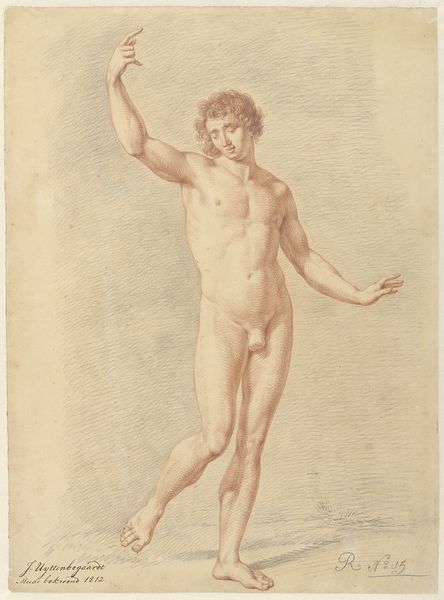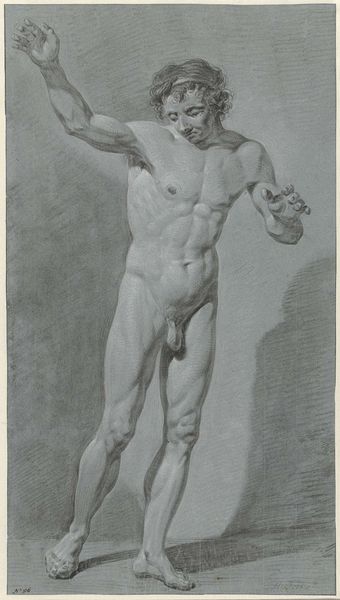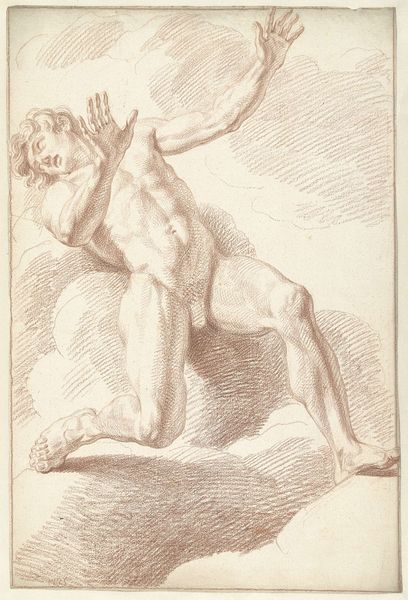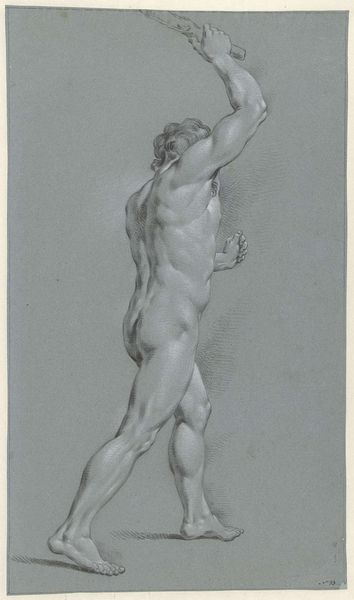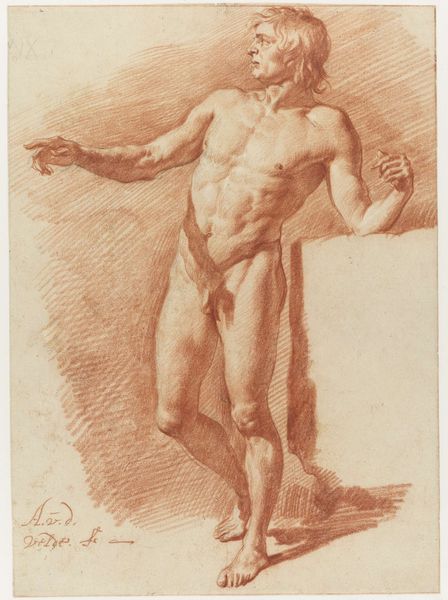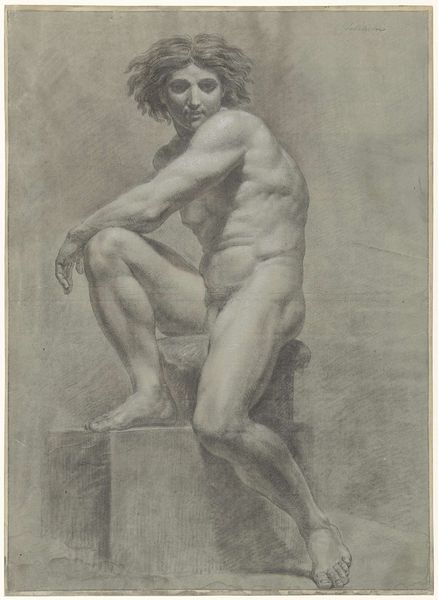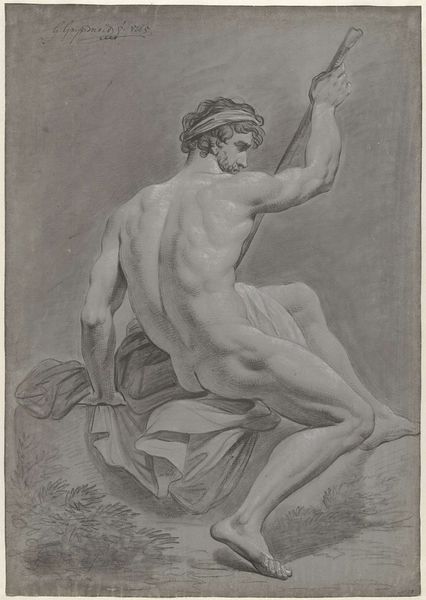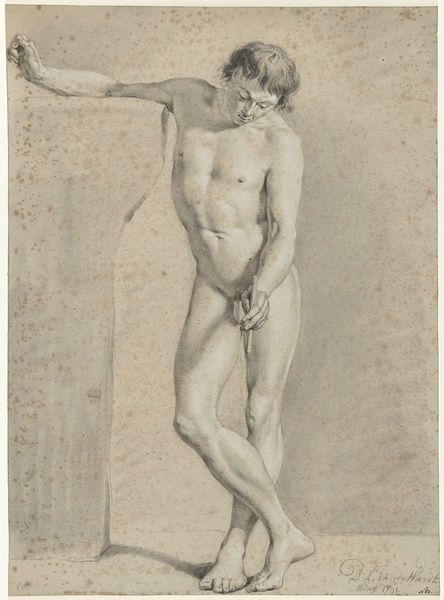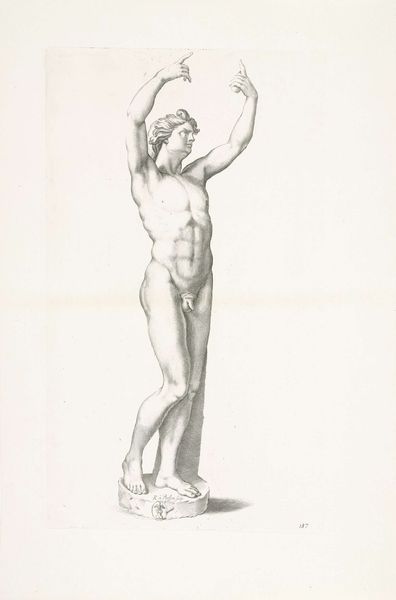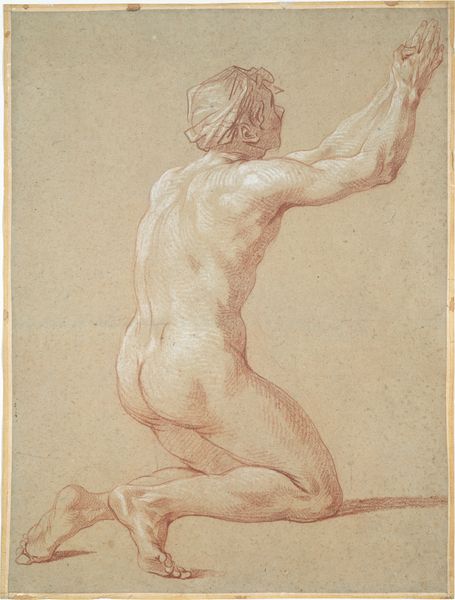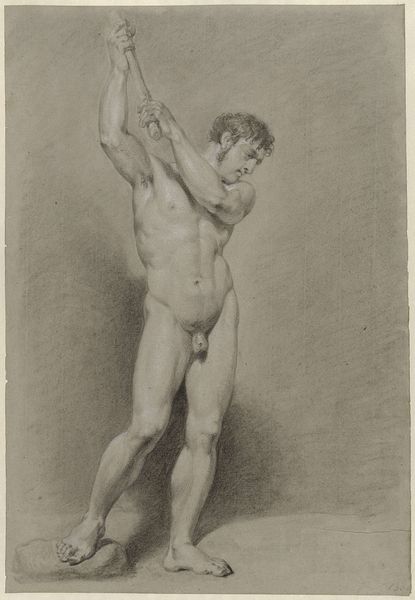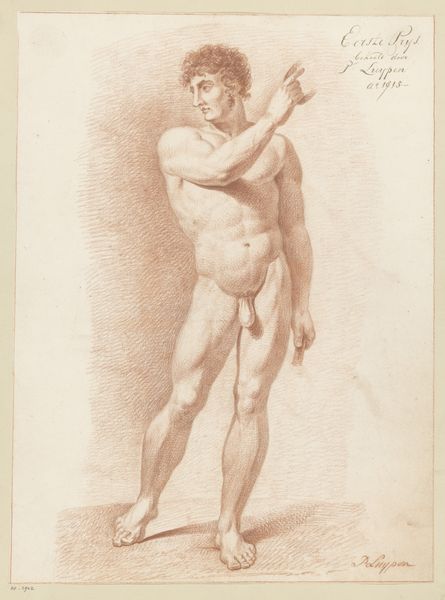
#
pencil drawn
#
amateur sketch
#
light pencil work
#
pencil sketch
#
charcoal drawing
#
charcoal art
#
portrait reference
#
pencil drawing
#
portrait drawing
#
pencil work
Dimensions: height 539 mm, width 386 mm
Copyright: Rijks Museum: Open Domain
Editor: This pencil drawing, "Mannelijk naakt, knielend op één knie," attributed to Johann Joseph Schwachhofer and possibly created between 1805 and 1823, is strikingly poised. I find myself wondering about the figure’s intentionality and how that affects the viewer's perception of masculine ideals. What's your take on this, and how do you interpret the artist's intentions? Curator: That's a fantastic entry point! Given the era, and the societal expectations placed upon masculine representation in art, I find myself wondering: what is the power dynamic being displayed here? Consider how male nudes have historically functioned within art as both objects of admiration and assertions of power. In this context, kneeling is often associated with subjugation or supplication. Editor: Interesting! The raised arm creates an almost heroic element that seems to contradict the submissive kneeling position. Is that intentional? Curator: Precisely. The tension you’re sensing speaks to the conflicting messages around masculinity at that time, maybe even reflecting a broader societal negotiation around class and gender roles during the Napoleonic era. It’s possible this figure isn't simply submitting but rather in a moment of reflection, or even defiance. Who or what is he reaching for? Or against? Consider how many versions of masculinity get overlooked within academic canons. Editor: So, it’s more than just an exercise in form; it’s a potential commentary on contemporary society. Curator: Exactly! This piece can prompt discussions on power, vulnerability, and how masculinity is performed and perceived across different social stratifications. It isn’t just a historical object; it holds a mirror to enduring conversations we are still having today around the construction and performance of identity. Editor: This was such a helpful way to contextualize the drawing. It goes far beyond its aesthetic qualities, which is pretty exciting to unpack! Curator: I agree! And art provides that valuable access into social ideas of the time.
Comments
No comments
Be the first to comment and join the conversation on the ultimate creative platform.
